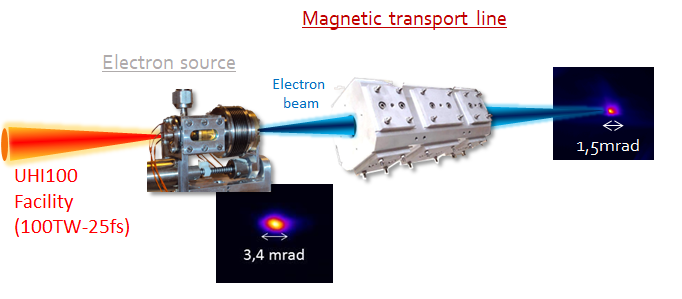Electron acceleration from intense laser-plasma interaction
Since the first experimental demonstration of peaked electron spectra in 2004, the field of laser driven wakefield accelerator (LWFA) has achieved tremendous progress, benefiting from the constant evolution of the laser technologies.
Focused in a plasma, the short and ultra intense pulses (1018-1019W / cm2) available today generate relativistic electron beams with remarkable properties: short duration (fs), low divergence (mrad), high energy (few GeV). The electric fields generated during interaction reaches 100’s of GeV/cm over centimetric accelerating distances. For comparison, conventional accelerators can reach these energies but over kilometric distances!
The research aims both to understand more and more finely the processes involved in the coupling of the ultrashort and intense lasers with the plasma, and to optimize, through the control of all the laser-plasma parameters, the source itself for the potential applications.
We have developed and optimized our electron source and since a few years, we have now the possibility to transport the electron beam 1m away from the source for potential applications, like radiotherapy or in the context of future multi-stage laser plasma accelerator developments.

Benifiting from different laser particle sources generating with UHI100 laser facility, we have started a collaboration with physico-chemist from LIDYL and radiobiologists from Institut François Jacob (CEA-Fontenay aux Roses) to launch a new activity devoted to the study of extrem dose rate effects on biological cells - In this context, we are partners of the Nanotherad project, which is an IRS funded by IDEX Paris Saclay (Nanotherad).
